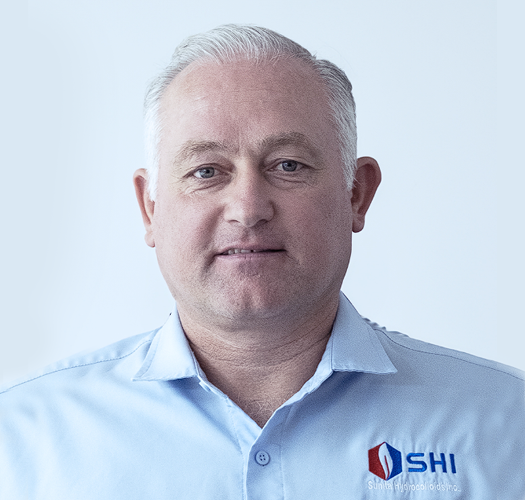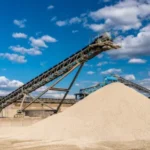Understanding Slick Water Fracking and Managing Frac Flowback Efficiently
Hydraulic fracturing is one of the most important methods used to unlock oil and gas within unconventional reservoirs. Among the various fracturing approaches, slick water fracking has become highly popular due to its efficiency.
This process involves the injection of hydraulic fracturing fluids, which are low-viscosity, water-based fluids blended with chemical additives that help to create extensive fractures, minimize friction losses and increase hydrocarbon recovery. Effective management of frac flowback is essential for sustaining well productivity and protecting the environment. This involves recovering and treating fluids that return to the surface after the fracturing process.
What is Hydraulic Fracturing and Fluids
The hydraulic fracturing process uses high-pressure water, sand and chemical additives that are pumped deep into the wellbore to open fractures in tight formations like shale.
In slick water fracking, around 98 to 99.5 percent of the mixture is composed of water and sand, while the remaining fraction consists of carefully selected additives designed to control performance, improve the flow characteristics of the fluid, and support the development of efficient fracturing.
The use of slick water fluids allows operators to reduce friction losses and increase the effective fracture length, which is a critical aspect of water management that helps to achieve better well stimulation outcomes.
Key Fracturing Fluid Components
A slick water formulation is composed of several functional additives that work together to provide a solution for supporting efficient operations and reducing costs:
- Friction reducers (polyacrylamide): These materials reduce friction between the fluid and wellbore to improve pumping efficiency.
- Surfactants: These help reduce surface tension, facilitating smoother oil and gas flow through the fracture network.
- Clay stabilizers: These prevent clay swelling and disintegration that could block the flow channels inside the formation.
- Scale inhibitors and biocides: These chemicals prevent mineral scale formation and bacterial growth that could damage the well infrastructure.
- Crosslinkers and breakers: These agents control the gel structure of the fluid during and after the fracturing process to ease cleanup.
Recent hybrid systems that combine slick water with weak gels have improved proppant transport in gas wells, enabling operators to maintain fracture conductivity even in high-pressure, high-temperature conditions.
The Fracturing Process Explained
The slick water hydraulic fracturing process involves several precision-controlled stages:
- Pre-frac assessment: The slick water process begins with a detailed assessment of formation properties such as porosity, permeability and stress profiles.
- Drilling and casing: A well is drilled vertically through the earth, and a horizontal section is then drilled into the shale formation. Steel casing is inserted into the wellbore, and cement is pumped around it to create a barrier, protecting freshwater aquifers from contamination.
- Perforating: Perforating guns are lowered into the horizontal section of the well and fired to create tunnels through the casing and rock.
- Fluid injection: Once analyzed, high-pressure slick water is injected into the well to open fractures in the rock.
- Proppant transport: Sand or ceramic proppants are then carried by the fluid deep into these fractures to keep them open after pressure is released.
- Chemical control: Operators continuously monitor pressure, temperature, and chemical composition to ensure that viscosity and fluid behavior remain optimal throughout the operation.
- Flowback initiation: After the main stimulation phase, pressure is reduced and a portion of the injected fluid returns to the surface, signaling the start of the flowback period. This stage provides valuable data regarding formation behavior and well performance.
What is Flowback in Oil and Gas? – Characteristics and Challenges
Flowback refers to the portion of the injected fluid that resurfaces from the well after fracturing. It typically occurs within the first few days to several weeks of post-fracture operations.
This returning fluid contains both the original fracturing fluid and naturally occurring formation water, and it can be characterized by high fluid volume . Proper management of flowback is essential to maintain operational efficiency and uphold environmental standards.
Characteristics of Flowback Fluid:
Flowback water can consist of millions of gallons from a single well. It contains:
- Residual additives, polymers and suspended solids
- Proppant residues and hydrocarbons
- Salts and minerals leading to high total dissolved solids (TDS), often reaching 300,000 mg/L in shale basins
Stages of Flowback:
The stages of flowback following hydraulic fracturing can be described as three distinct phases.
Early Stage
In the initial stage, when the well is opened and gas channeling has not yet occurred, the liquid production rate continuously increases while the wellhead casing pressure first decreases and then begins to rise.
Middle Stage
The second stage is characterized by a simultaneous increase in liquid production rate, gas production rate, and wellhead pressure, with the wellhead pressure reaching its peak as gas channels form and enhance the movement of fluids. Due to the unloading of the wellbore, the wellhead pressure rises until it reaches its maximum.
Later Stage
In the final stage, the wellhead pressure and liquid production rate decrease, and the gas production rate gradually declines after peaking. During this late stage, established gas flow channels efficiently drive out most of the fracturing fluid, while residual fluids remain trapped in dead-end fractures and smaller pore spaces.
Over time, this residual fluid remains relatively unchanged in volume, illustrating the limit of flowback recovery from these zones.
Managing Frac Flowback Efficiently
Flowback management combines chemical, physical, and environmental control methods to ensure effective water recovery and reuse.
Core Flowback Management Techniques
-
Water chemistry optimization
This involves carefully adjusting the chemical balance of flowback fluids using buffering agents and clay stabilizers to maintain stability in ion concentrations and prevent damage to the reservoir and equipment.
-
On-site treatment
Flowback water undergoes physical and chemical treatment processes such as flocculation for solid removal, advanced filtration to separate suspended particles, and desalination techniques including reverse osmosis to reduce salinity and improve water quality for reuse.
-
Recycling and reuse
Coagulation, filtration, and membrane distillation can be used to remove high concentrations of total dissolved solids (TDS), metals (like iron and barium) and suspended solids from the flowback.
-
Disposal and compliance
Excess or non-recyclable flowback water is disposed of through environmentally sound methods that comply with applicable regulations, such as safe deep well injection or managed evaporation ponds, ensuring environmental protection and regulatory adherence.
Environmental and Operational Challenges
- Toxic load: Flowback fluids often contain hazardous substances such as heavy metals, residual hydrocarbons, and natural gas along with very high levels of total dissolved solids. These toxic components pose significant risks to soil and water quality if not carefully managed.
- Extreme salinity and viscosity: The highly saline nature and variable viscosity of flowback water make conventional treatment methods less effective, demanding specialized chemical and mechanical processes to handle the fluid properly.
- Produced water volume: Flowback and produced water represent the largest waste stream generated in oilfield operations, creating substantial logistical and environmental challenges in collection, treatment, and disposal.
- Regulatory dynamics: The oil and gas industry must fulfil complex regulations enforced by the Environmental Protection Agency and various state authorities that also relate to enhanced oil recovery practic . These regulations cover water usage, waste disposal, emissions and spill prevention to ensure compliance and protect ecosystems.
Role of Hydrocolloids in Enhancing Fracturing Fluids and Flowback
Sunita Hydrocolloids specializes in advanced fracturing oilfield chemical solutions that improve both fracturing and flowback performance. We offer high-performance guar-based gelling agents, surfactants and stabilizers designed to improve operational reliability in unconventional reservoirs.
Its proprietary hydrocolloid-based systems improve fluid viscosity control. This provides efficient proppant transport and cleaner flowback. Our advanced crosslinkers and breakers enable faster gel breakdown, which improves fluid recovery and reservoir contact.
Sunita Hydrocolloids also provides dedicated transloading and logistics services across the United States to ensure precise product performance across varying field conditions.
The use of hydrocolloids helps reduce chemical load and water consumption across shale operations. These bio-based polymers support greater environmental sustainability by improving fluid recovery and aligning with corporate ESG commitments aimed at lowering emissions and minimizing ecological impact.
Conclusion
Slick water hydraulic fracturing continues to be a cornerstone of the fracking process in oil and gas production because of its versatility and ability to open deep and low-permeability reserves. To provide the best results, Sunita Hydrocolloids offers innovative hydrocolloid formulations that improve fluid efficiency, improve recyclability and promote sustainable field operations.





